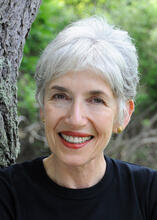
Pickering is portrayed as an extremely fair character with great respect for his women computers and a lifelong investment in their success. The result is a far more accurate telling, of course, and a much subtler one. Even her language emulates the phrasing of the sources, as though modernizing her account would distract readers, reminding them of the interloper who stands between them and sheer documentation. She does not interpret the past through the lens of the present. Sobel does not condemn or excuse or flatter or even analyze the characters. Guided by a historian’s sacred principles, she lets the story emerge from the thorough research she documents. In the historically accurate version Dava Sobel tells in her careful and detailed style, the past is neither sanitized nor embellished. Reference to the expression “harem” is gradually deleted, as though cleansing the past with an antiseptic of the present is good policy. Over time, this story, clearly apocryphal in places, has been sanitized. So he fired all the male computers and hired his Scottish maid, Williamina Fleming, who indeed did a better job and for a fraction of the pay. In frustration, he supposedly shouted to his all-male computers, “My Scotch maid could do a better job.” Now maybe the phrasing is impolitic, but that was the version going around. Pickering was fed up with the incompetence of his “computers,” the common parlance for humans who computed, in this case, crunching the numbers to arrive at astronomical calculations.

I was only a little bit more familiar with the history in “The Glass Universe.” Here’s the (inaccurate) version I learned: Edward Charles Pickering, director of the Harvard College Observatory from 1877 to 1919, hired a gaggle of women, known fondly as Pickering’s Harem.

“The Glass Universe,” by Dava Sobel, recounts the previously neglected history of the women astronomers at the Harvard College Observatory near the turn of the 20th century, while “Hidden Figures,” by Margot Lee Shetterly, does justice to the African-American women mathematicians and engineers at NASA in the mid-20th century. Two illuminating recent books manage to convey a similar sentiment, focused on the uninhibited love of science and math, while still gracefully incorporating the thorny topic of women in science. My feeling: Let me get on with what I do well, and let others get on with what they do well. By contrast, I am not at all happy to discuss gender, which is not remotely my area of expertise. I love to riff on the origin of the universe, black holes, space and time. I love to discuss science, especially mathematics and physics, in their most abstract forms, far removed from mundane human concerns.

HIDDEN FIGURES The American Dream and the Untold Story of the Black Women Mathematicians Who Helped Win the Space Race By Margot Lee Shetterly 346 pp. THE GLASS UNIVERSE How the Ladies of the Harvard Observatory Took the Measure of the Stars By Dava Sobel Illustrated.


 0 kommentar(er)
0 kommentar(er)
